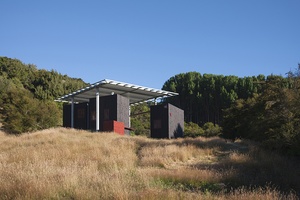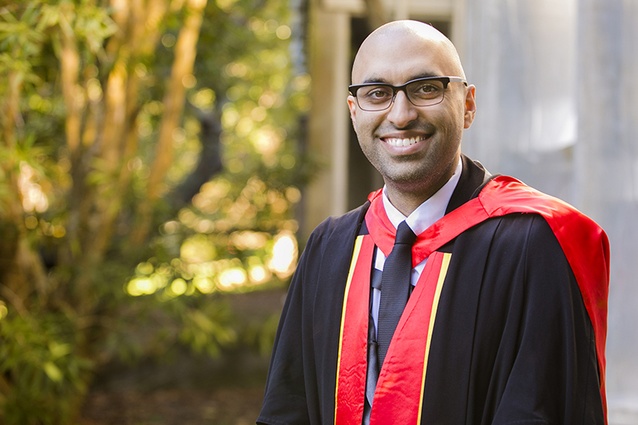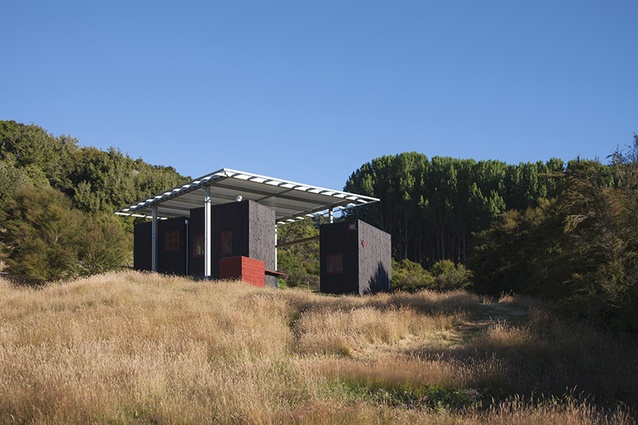Architecture, landscape and tourism
Architectural designer Sarosh Mulla graduates this week with the first Doctor of Philosophy in Architecture with Creative Practice Component from the University of Auckland. Although doctorates of this type have been undertaken at the University for some time, Sarosh is the first to graduate with one in Architecture.
A PhD with a creative practice component recognises a creative arts or design output as a contribution towards advancing knowledge in a particular field. This allowed Sarosh to research and build the multi-award winning Longbush Ecosanctuary Welcome Shelter in Gisborne as part of his degree.
The shelter embodies his written thesis entitled Perception and Projection: Augmenting the relationship between architecture and landscape in New Zealand tourism.

Sarosh’s interest in architecture, landscape and tourism developed after spending three months as a full time tourist travelling throughout Europe and North America, immersing himself in diverse architecture and landscapes.
The experience showed him the importance of spatial environments in defining culture: “I asked myself, how are tourism and architecture related in New Zealand? The key to this question I felt was at the intersection of context and culture in New Zealand: the landscape.”
The Longbush Ecosanctuary, which is owned by Jeremy and Dame Anne Salmond, was an ideal site for Sarosh’s architectural research and building project.
Constructed by 88 volunteers led by Sarosh, the Welcome Shelter is designed as an environmental education and volunteering facility at the ecosanctuary. Built entirely from donated materials, the shelter is the largest volunteer-constructed piece of public architecture in New Zealand.
Sarosh, who now lecturers at the School of Architecture and Planning alongside working at architectural practice PAC with Aaron Paterson, says a doctorate with a creative practice component was a perfect way of developing both his design and academic practice.











